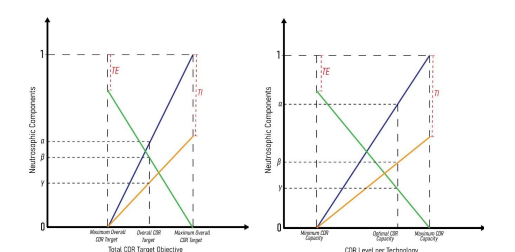Planning Negative Emissions Technologies Portfolios Under Neutrosophic Environment
Keywords:
optimization; carbon dioxide removal; fuzzy sets, intuitionistic fuzzy sets; risk management; synergistic interactions; uncertaintyAbstract
The deployment of large-scale Negative Emission Technologies (NETs) is now considered
a key strategy in climate change mitigation due to their capability to counteract emissions
biophysically and economically. However, large-scale NETs will require resources such as land,
water, and energy that are limited and uncertainties are present in such technologies. Managing
such uncertainties is critical in NET portfolio modeling because they significantly impact the
resulting optimized solutions. Existing studies often fail to adequately address these uncertainties,
particularly in portfolio optimization, as traditional models often rely on post-optimization
sensitivity analysis that does not fully capture the inherent uncertainties in NET performance. This
work addresses the research gaps by developing a neutrosophic linear programming (NeLP) model
that incorporates membership, non-membership, and indeterminacy components to represent the
uncertainties in resource availability, CDR capacities, and synergistic interactions. Unlike previous
models, the current novel NeLP model applies different models of uncertainty as neutrosophic sets
and adjust expert’s risk tolerance levels providing a more flexible and realistic approach to NET
portfolio optimization . The model is demonstrated in two case studies. The results suggest that the
carbon dioxide removal (CDR) levels of various options have different behaviors across different
risk settings, as illustrated by the two case studies. The changing optimal solutions in response to
shifts in risk appetite provide decision-makers with valuable insight into selecting NETs with
significant CDR potential for reducing large-scale greenhouse gas emissions
Downloads

Downloads
Published
Issue
Section
License
Copyright (c) 2025 Neutrosophic Sets and Systems

This work is licensed under a Creative Commons Attribution 4.0 International License.






